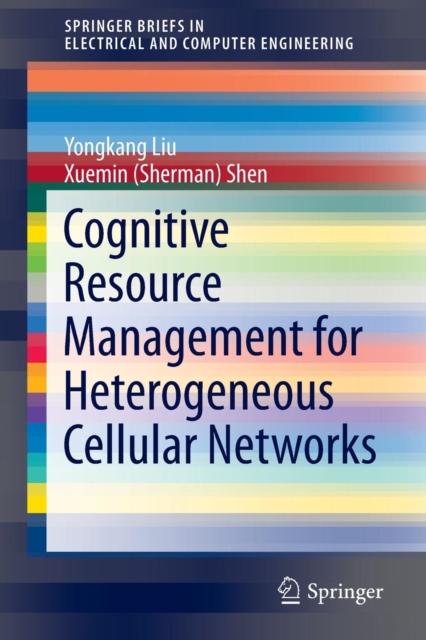
Cognitive Resource Management for Heterogeneous Cellular Networks Paperback / softback
by Yongkang Liu, Xuemin (Sherman) Shen
Part of the SpringerBriefs in Electrical and Computer Engineering series
Paperback / softback
Description
This Springer Brief focuses on cognitive resource management in heterogeneous cellular networks (Het Net) with small cell deployment for the LTE-Advanced system.
It introduces the Het Net features, presents practical approaches using cognitive radio technology in accommodating small cell data relay and optimizing resource allocation and examines the effectiveness of resource management among small cells given limited coordination bandwidth and wireless channel uncertainty.
The authors introduce different network characteristics of small cell, investigate the mesh of small cell access points in parallel with macrocells in network control and resource management and address resource management in the backhaul with coordination constraints and wireless channel uncertainty.
The final section of this brief summarizes and provides future research directions for this topic, including a proposed framework that has been evaluated through realistic simulations.
Cognitive Resource Management for Heterogeneous Cellular Networks is designed for researchers and professionals working in wireless communications and networks.
Advanced-level students studying electrical and computer engineering should also find the content helpful.
Information
-
Item not Available
- Format:Paperback / softback
- Pages:65 pages, 6 Tables, black and white; 21 Illustrations, black and white; X, 65 p. 21 illus.
- Publisher:Springer International Publishing AG
- Publication Date:08/05/2014
- Category:
- ISBN:9783319062839
Other Formats
- PDF from £38.24
Information
-
Item not Available
- Format:Paperback / softback
- Pages:65 pages, 6 Tables, black and white; 21 Illustrations, black and white; X, 65 p. 21 illus.
- Publisher:Springer International Publishing AG
- Publication Date:08/05/2014
- Category:
- ISBN:9783319062839










